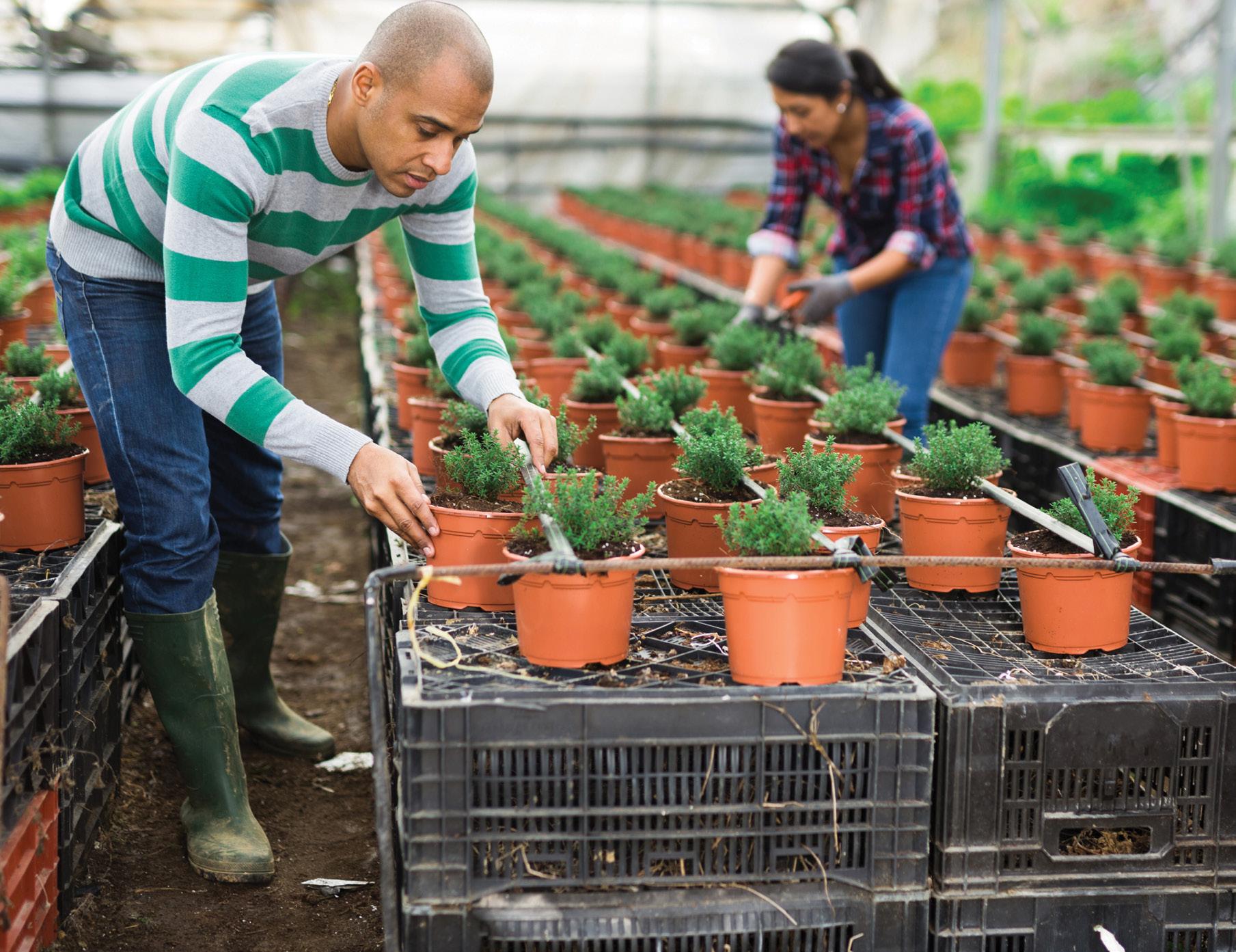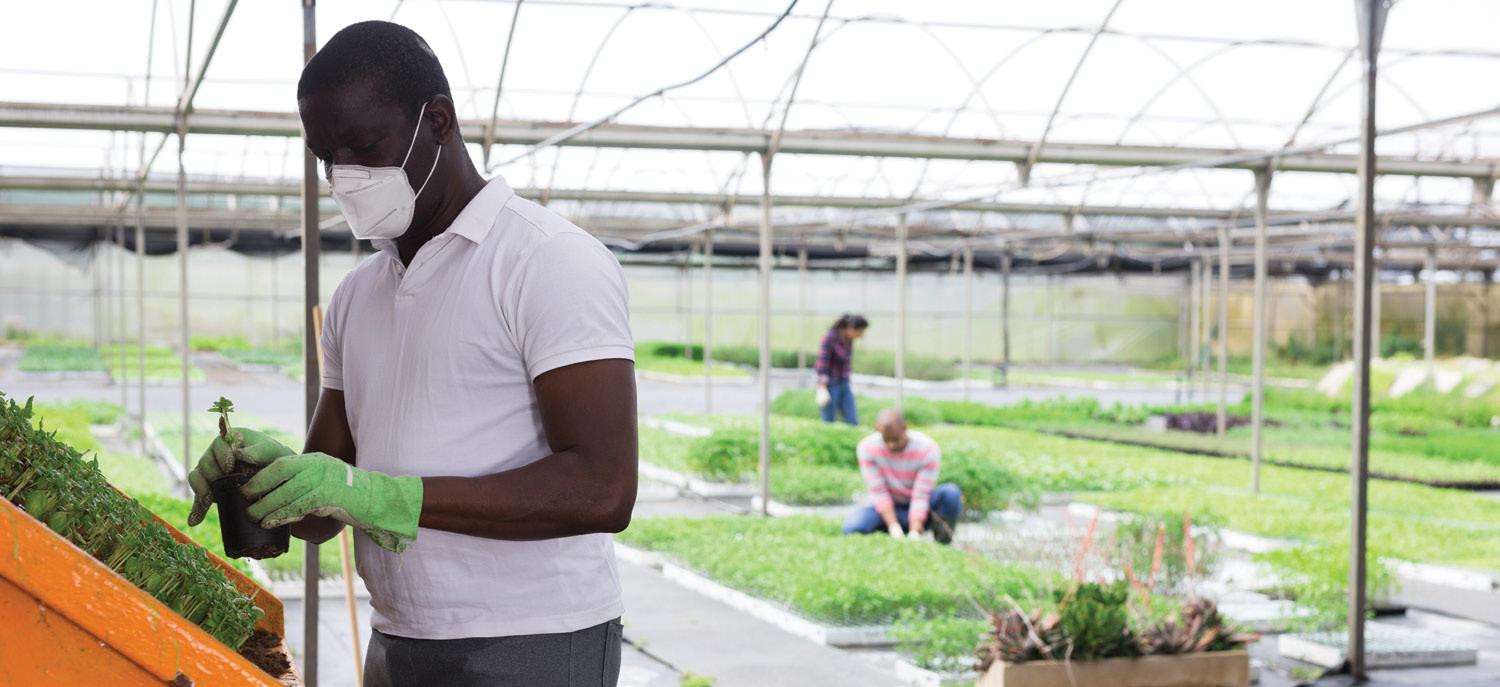
5 minute read
Labor Shortages in the Horticultural Sector
Labor Shortages in the Horticultural Sector Will Remain Prevalent Without Policy Changes or Innovative Market Solutions
Article provided by Zachariah Rutledge, Assistant Professor in the Agricultural, Food, and Resource Economics Department at Michigan State University
The statistics in this article are a result of the 2022 Employment and Labor Survey
The United States is facing a declining supply of farm labor. Tighter border security, demand for immigrant labor in the service sector, and falling birthrates and an expanding economy in Mexico all contribute to the problem.
When there is a shortage of labor, higher wages should cause farmers to substitute labor for technology that increases worker productivity. We surveyed members of AmericanHort and the green industry to collect information about the prevalence of horticultural industry labor shortages, how the COVID-19 pandemic has impacted farming operations, and the extent to which labor-saving technologies are helping mitigate the problem. We received responses from a broad sample of greenhouse and nursery operations spanning the entire United States. Survey results show a high prevalence of labor shortages throughout the horticultural industry. Nearly two thirds of survey respondents indicated that they were unable to hire all the employees they wanted during 2021. After accounting for apparent data entry errors, the average labor shortage across the sample was 18% of the workforce that growers needed to operate at full capacity. To put this in perspective, the average grower who would have normally hired 100 workers but faced a labor shortage would have only been able to hire 82 workers during 2021. About 60% of growers indicated that COVID-19 caused them to experience additional labor shortages in 2021. The leading reasons included actual or suspected exposure to COVID-19, friends or family members exposed to the virus, and a lack of child-care options for employees. Eight out of every 10 growers indicated that they had incurred additional costs related to COVID-19 prevention measures, with some 43% paying more than $500 per employee. Seventeen percent of those who incurred Covid-related costs reported spending at least $10,000 on each employee.

Survey respondents offered a variety of work incentives to help attract and retain employees, including health insurance, bonuses, and scheduling flexibility. Nearly half of the surveyed growers started using a new labor-saving technology during 2021. Of those who did, 50% reported spending at least $100,000 on it. Interestingly, only half of the respondents indicated that the technology reduced labor’s share of their total operating costs. Thus, despite making large capital investments on technology, only some growers found that it actually reduced labor costs. One solution to the labor crisis could be use of the H-2A visa program to bring in foreign-born workers, but many horticultural jobs are considered year-round, and the H-2A visa program can only be used for jobs that are temporary or seasonal in nature. Thirty five percent of the growers surveyed used the H-2A program in 2021. Half of those who used the program reported that they had employment opportunities for H-2A workers longer than the current maximum of 10 months, revealing significant demand for a year-round or long-term agricultural guest worker program. The Farm Workforce Modernization Act (FWMA), which passed in the House during 2021 and is currently being prepared for the Senate, could help address this issue. Under Title 2 of the House version of the FWMA, 20,000 H-2A workers could work year-round for up to 3 years, which would allow horticultural crop producers, and other agricultural producers with year-round needs, access to a reliable, legal foreign workforce. The cap on yearround workers would be adjusted each year, based on labor metrics or an emergency determination if significant labor shortages were found.
The results from this survey reveal that greenhouse and nursery growers are facing significant labor constraints and that current policies are failing to meet their needs. While growers are taking actions to help mitigate production losses through the use of work incentives and technology investments, many continue to face challenges securing an adequate workforce. Without changes to existing policies or innovative market solutions, this problem is not going to go away. AmericanHort’s advocacy team continues to work to address the workforce needs of our industry. To learn how you can help, visit
AmericanHort.org/Advocacy/Get-involved.
The 2022 Employment and Labor Survey will be available to AmericanHort members in early November. Watch your email for details on how to get your copy.
The Inflation Reduction Act— A High Level Review on Energy

Article provided by APPI Energy, an AmericanHort Affinity Partner
On August 16, President Biden signed into law the Inflation Reduction Act of 2022. While there is a lot to unpack from the bill, our focus here is on the energy component, which aims to invest in domestic energy production and manufacturing, and to reduce carbon emissions by roughly 40 percent by 2030.
Key takeaways:
• The bill includes a total of $369 billion in clean energy tax credits and funding for climate and energy programs. • The bill contains a range of incentives and tax credits to spur emissions-free energy, electric vehicles, EV chargers, nuclear power, energy storage, and carbon capture, to name a few. • Independent analysis estimates that the bill will reduce U.S. greenhouse gas (GHG) emissions 40% by 2030 • The legislation includes $4.5 billion in funding for states to provide rebates for the purpose of new electric appliances including ranges, cooktops and wall ovens. The Department of Energy will allocate funds to individual states, and each state will choose how to use those funds.
• Incentives for domestic manufacturing, along with current potential tariffs on imported equipment, are expected to boost U.S.-made parts for solar projects. • The Investment Tax Code (ITC) for most on-site projects will increase from 26% to 30%.







